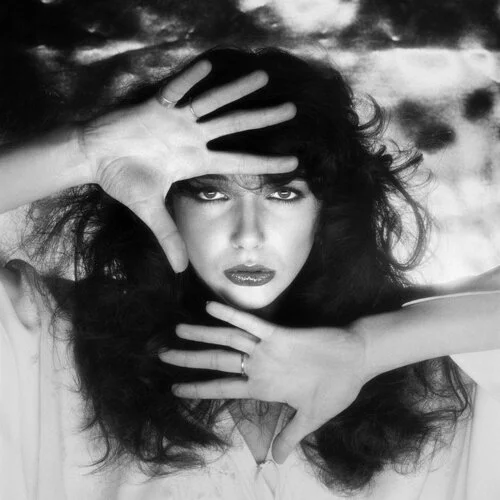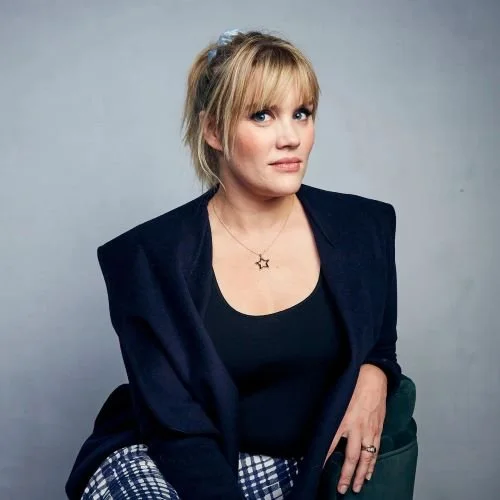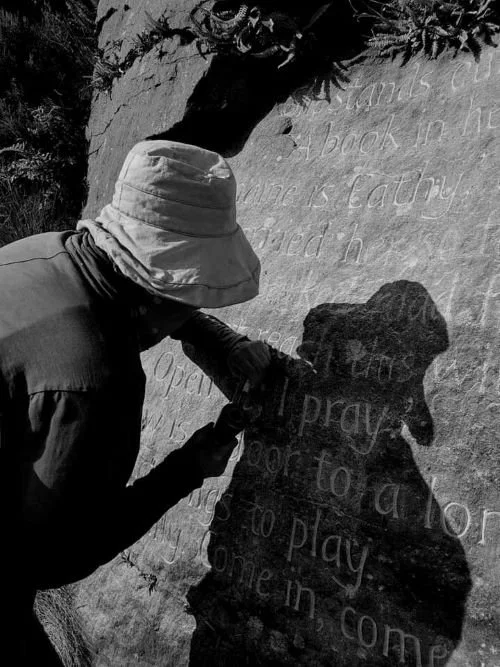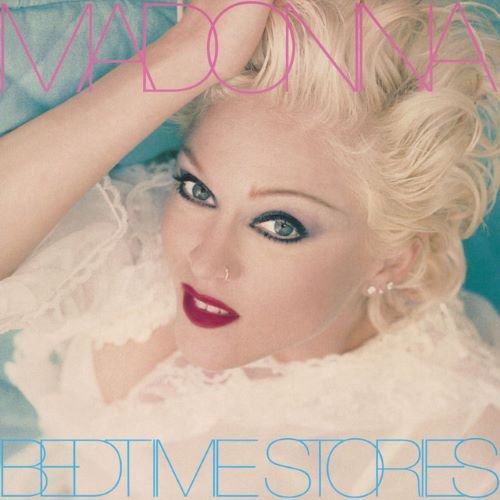FEATURE:
Just Like a Photograph, I Pick You Up
IN THIS PHOTO: Kate Bush in the final session with Gered Mankowitz at Old Chapel Studios in London in 1979
The Visual Allure, Engagement and Genius of Kate Bush
_________
THE start of a chapter…
IN THIS PHOTO: Kate Bush circa 1980/PHOTO CREDIT: John Carder Bush
in Graeme Thomson’s biography of Kate Bush, Under the Ivy: The Life & Music of Kate Bush, talks about her allure and appeal as a visual artist. Actually, someone who captivated and grabbed the camera. The chapter is called An Architect’s Dream. That title is a song on Bush’s 2005 album, Aerial, though it is very apt when we consider Bush in front of the camera. This perfect and ideal photographic subject. Something I have explored a little before, I have been thinking how that natural instinct to project the greatest looks and expressions was instilled early on. One of my favourite bits of Kate Bush memorabilia, archive artefact or whatever you want to call it, is the Cathy photobook. A collection of photos from Bush’s brother, Jay/John, it is a collection of photos of Bush from childhood. First published as a run of just five-hundred copies in 1986, it would have been fascinating given the time it was released. A year after Bush released Hounds of Love and the same year as her greatest hits album, The Whole Story, arrived, we got this look at her childhood. Black-and-white images during a period in the 1980s that seemed to be more neon, bright and variegated. Every child has photos taken of them. Few grow up in a household full of art and music and have a brother who is a professional photographer! One could say Bush was exposed to the camera and taught how to be natural but also give something extra. Thomson, in his book, talks about Bush’s early videos. Think about everything up to Breathing and Army Dreamers from 1980’s Never for Ever. If we consider Wuthering Heights, The Man with the Child in his Eyes and Babooshka. Maybe still finding her feet regarding concept and scale. That the earliest videos might seem a little wince-inducing or odd. A naivety and innocence that might seem dated or insubstantial. Bush’s initial video for Wuthering Heights did get some bad publicity.
IN THIS PHOTO: Kate Bush with a snappy friend in Amsterdam circa 1979/PHOTO CREDIT: Claude Vanheye
Bush became aware of the camera as a child. How to not feel posed and forced as a subject. Looking completely natural but also entrancing. Her childhood photos are so interesting. Into adulthood, other emotions and dynamics came through the photos. Look at videos like that for Wuthering Heights and they are standout and timeless because Kate Bush is in there! Right from the start of her career, Bush knew where the camera was and where the boundaries were. That is what Paul Henry, who directed videos included that for The Dreaming, said. It is hard to put into words, but look at some of the expressions and looks from photos back in 1978/1979. So many different possibilities and layers without exaggeration. Such a natural subject! This aura and communication with the camera is something Bush had and did like few other artists. Gered Mankowitz, who photographed Bush in 1978 and 1979, reserved a very special place and platform for her in this respect. That she could give something to the camera that is immortal and unique. It may only be a few seconds of movement or an expression. That economy and power Bush has. Although Kate Bush was very much embracing the camera for her videos and wanted to make them more cinematic and ambitious, this was very much for the sake of the song. Ensuring that she provides a visual interpretation that was original and bold. She was not an artist trying to sell sex or make it all about her. The same is true of photographs. She would be so committed and often be in a studio for hours whilst various shots were taken. Away from that, Bush was very private and not at all starry. She was almost more comfortable being disguised and immersed in a song. Playing a character or adopting a role. That was more interesting and important to her. She felt that she was not interesting. Why people would want to see her in photos.
One of the defining aspects of Kate Bush is her changing looks and periods. Such a diverse and adaptable photographic subject who could inhabit any space or fashion and make it her own. There is this contrast between Kate Bush as a normal person at home and Kate Bush the artist on record and on the screen. Many were surprised when a video like Babooshka came out. Such a starling and eye-opening video, it is world away from the same woman who is this very sweet, shy and down-to-Earth person who would make tea and be this wonderful host! Not quite Jekyll and Hyde, Bush was definitely someone with two sides. Maybe exaggerating various aspects for creative and photographic purposes, one cannot deny how she was this genius in front of camera. Images so important to promoting her work. Pushing photographers and getting the very best out of them. Graeme Thomson does note in his book how Bush, in music videos, could go ugly, swap genders and play alluring roles. There was this walking on a precarious line. Inspired by cinema and making her music as visual as possible, it is no surprise that she was so curious and compelling in front of camera. Putting so much imagination and work into her promotional clips.
IN THIS PHOTO: Kate Bush in 1989/PHOTO CREDIT: Guido Harari
I am so intrigued by Bush as this visual subject. Why she is so much more distinct than most of her peers. It was that balance between someone very private and un-starry and someone in her career who was assertive and keen for people to see her videos. As a photographic subject, there was never any signs of nerves or wanting to hide. That early familial exposure and training was a perfect test run for a scarier and more high-profile canvas. Working with a range of different photographers, all of whom had so much respect and love for Kate Bush. I guess we could get into a whole new area about the music videos and how they changed through the years. How various directors talked about Kate Bush and go deep into the filming process. I am fascinated by the chemistry and magic Bush provided in photographs. How there was this aura and spirit around her that was so special and hard to pin down. Maybe it is because her brother was around her with a camera and she started in this safe and comfortable space before going into a professional and less grounded space. Even so, she adapted really naturally and was a perfect subject. So patient and collaborative! That thing about giving a brief look or doing something small that translated into something huge powerful and evocative. Photos that still provide mysterious and compelling qualities all these years later. Whether it is shots of a teenage Bush in 1978 or photos for 2011’s 50 Words for Snow, still this hugely engaging subject. I would love to know the stories behind some of those iconic photos. The shoots and the conversations between Bush and the photographer. Whether that was Guido Harari or John Carder Bush – her brother photographed her as recently as 2011 -, always so involved and inspiring. Not someone who ever looked uninterested and like she had to get this out of the way. Even if Bush could never quite understand why people would want to see photos of her and was keener to focus on the music and videos, one cannot argue against the fact she was such a fascinating person to photo. Even so, when she was in front of the camera, she gave us something that…
IN THIS PHOTO: Kate Bush in 1993/PHOTO CREDIT: Guido Harari
IS truly remarkable.
































































